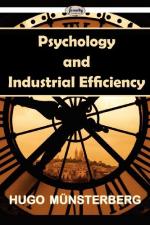If these experiments are varied sufficiently and a large mass of material brought together, we must be able to secure definite formulae. We may find that if the critical card appears among 6 cards, is shown for 5 seconds, and the group is again exposed after 20 seconds, 80 per cent of the subjects will recognize the substitution of a similar card, if the degree of similarity is 30 per cent, but only 60 per cent will recognize it if the degree of similarity is 70 per cent, and only 30 per cent will recognize it if the degree of similarity is 90 per cent. These are entirely fictitious figures and are only to indicate the principle. If such an exact formula were definitely discovered, we should still be unable to say from mere psychological reasoning what similarity value is legally permissible. If the rules against infringement are interpreted in a very rigorous spirit, it may seem desirable to prohibit imitations which are as little similar as those postal cards which were graded as 40 per cent in our similarity scale, and if the interpretation is a loose one, it may appear permissible to have imitations on the market which are as strongly similar as our postal cards graded at 80 per cent in our similarity scale. All this would have to be left to the lawmakers and to the judges. But what we would have gained is this. We could say: if our object exposed for 5 seconds in a group of 6 other objects is replaced after an interval of 20 seconds by an imitation and this change is recognized by 8 persons among 10, the degree of similarity is 30 per cent and if it is recognized by 3 out of 10 subjects, the degree of similarity is 90 per cent. In short, from any percentage of subjects who under these conditions discovered the substitution, we could determine the degree of similarity, independent of any individual arbitrariness. If such methods were accepted by the trade and the courts, it would only be necessary, to agree on the percentage of similarity which ought to be permitted, and all uncertainty would disappear. There would be no wrangling of opposing interests; it would be possible to find out whether the permitted limit were overstepped or not with an exactitude similar to that with which the weight or




